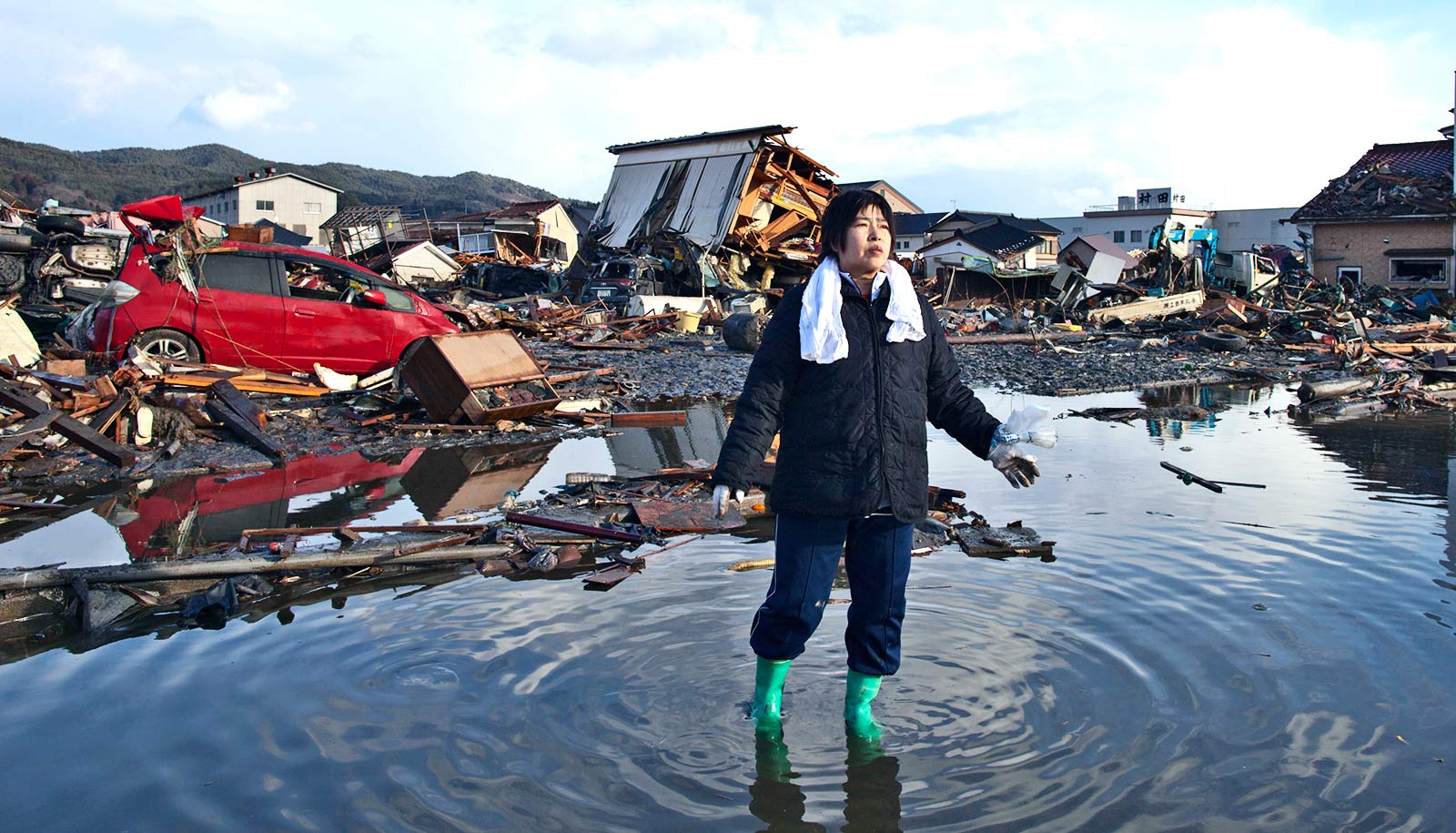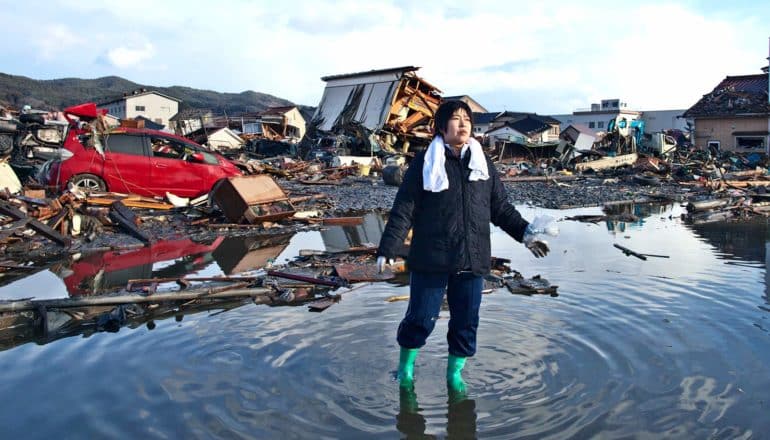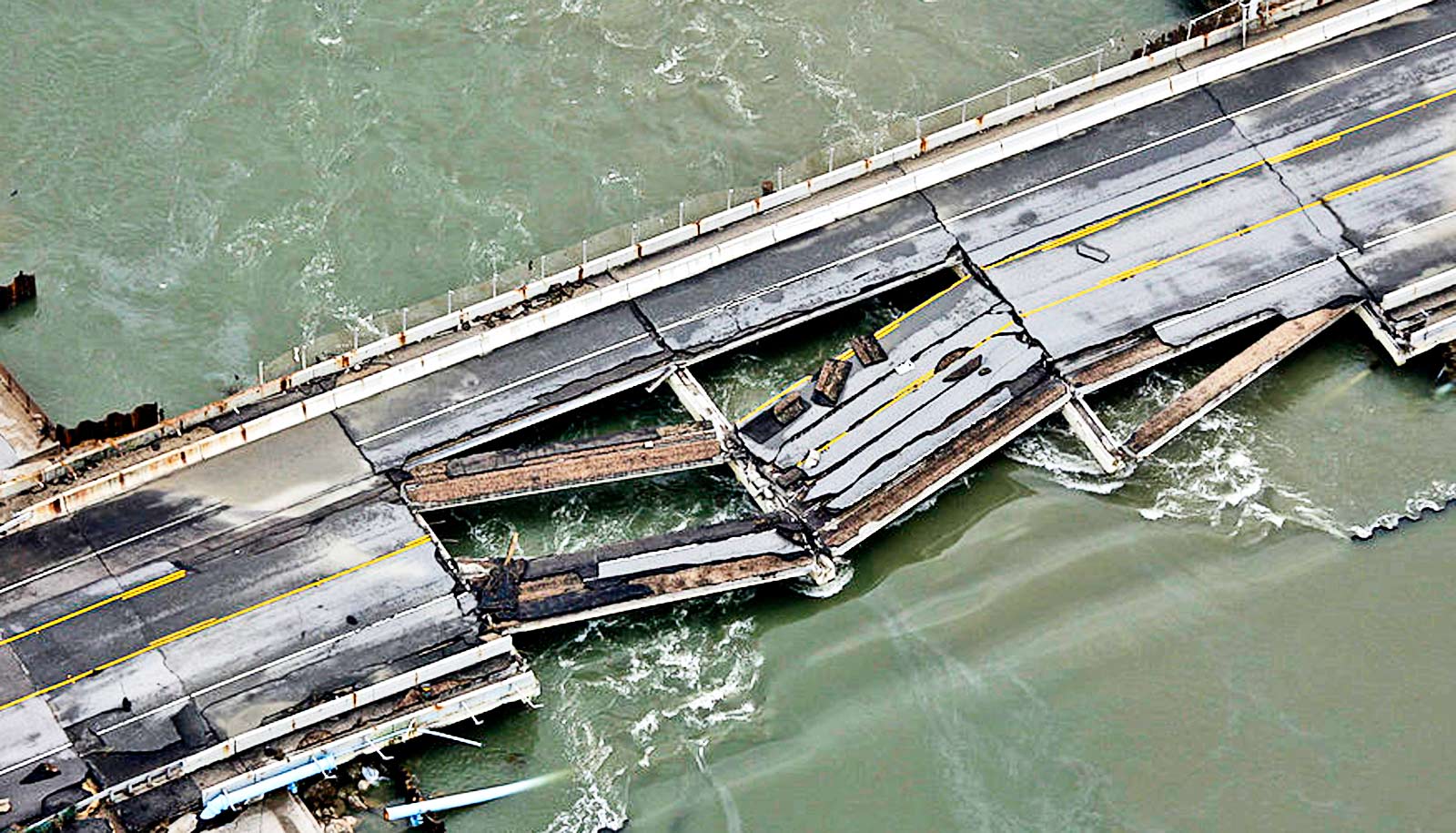
Chieko Chiba walks through the rubble after going to see her destroyed home March 16, 2011 in Kesennuma, Miyagi province, Japan. (Credit: Paula Bronstein/Getty Images )
New tsunami warnings could get more people to safety
"During the Tōhoku earthquake, a lot of people escaped to higher ground, like the roof, but they didn't go high enough."

A new method for local early tsunami warnings could give at-risk residents more accurate predictions about wave speed and height.
On a Friday afternoon in the spring of 2011, the Tōhoku-Oki earthquake shook northeastern Japan for six minutes and shifted the country’s main island by eight feet. Minutes later, residents began receiving tsunami warnings through broadcast media, mobile phones, and sirens.
But initial alerts underestimated the size of the waves and many people failed to evacuate to ground high enough to escape the waves that swept over parts of the coastline—some at heights up to 120 feet.
As it emerged from the catastrophe, Japan installed a network of seismic and pressure sensors on the ocean floor that have raised the bar for tsunami early-warning systems worldwide. The new research, which appears Geophysical Research Letters, suggests how warnings could be more accurate by combining data streaming in real-time from sensors like those in Japan with tsunami simulations.
“That means warning coastal residents that a tsunami wave generated 50 or 100 miles offshore is coming in the next 20 to 30 minutes,” says senior author Eric Dunham, an associate professor of geophysics at Stanford University’s School of Earth, Energy & Environmental Sciences.
Here, Dunham and lead author Yuyun Yang, a doctoral student at Stanford’s Institute for Computational & Mathematical Engineering, discuss their method and how in the future it might even be useful in places without dedicated offshore sensors:
The post New tsunami warnings could get more people to safety appeared first on Futurity.
Share this article:
This article uses material from the Futurity article, and is licenced under a CC BY-SA 4.0 International License. Images, videos and audio are available under their respective licenses.


